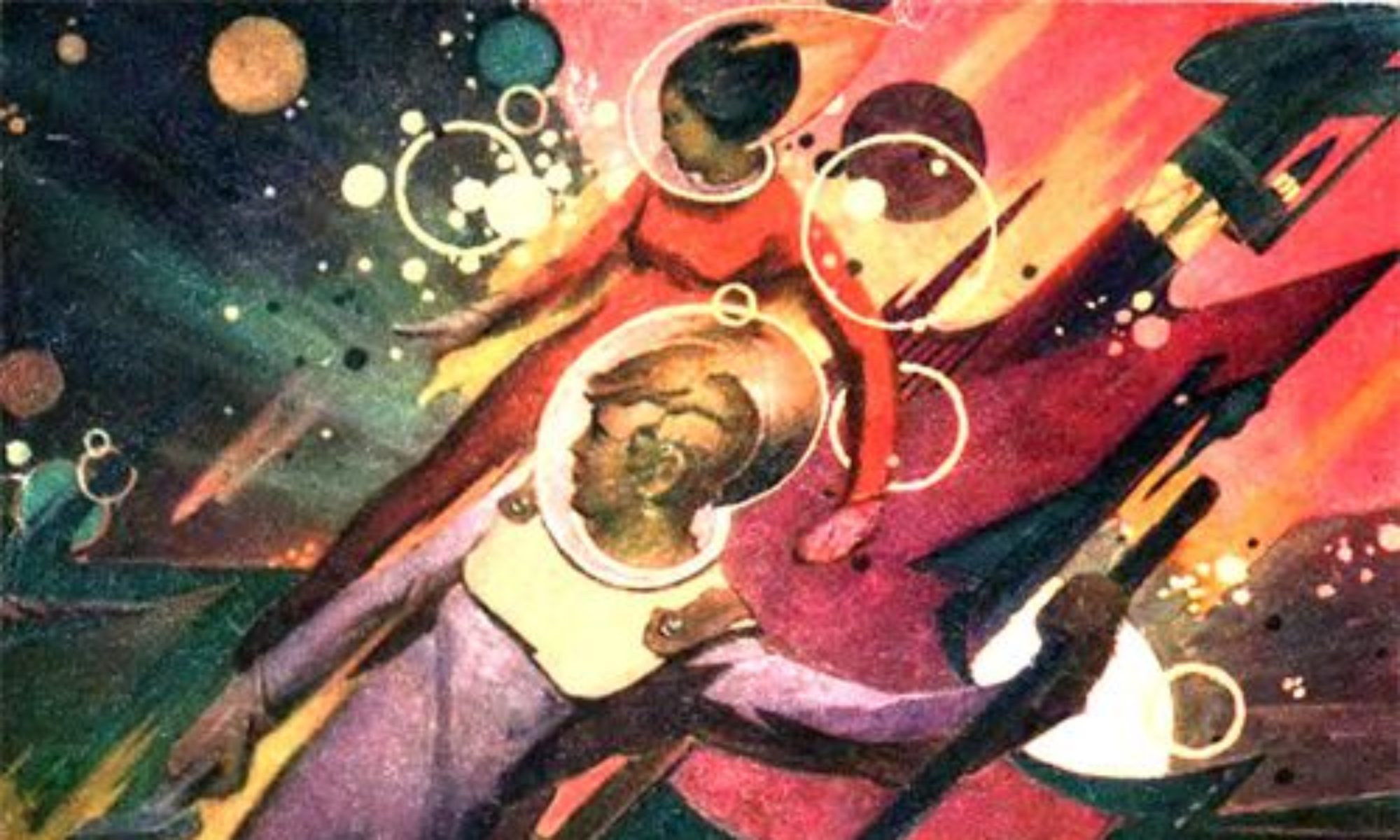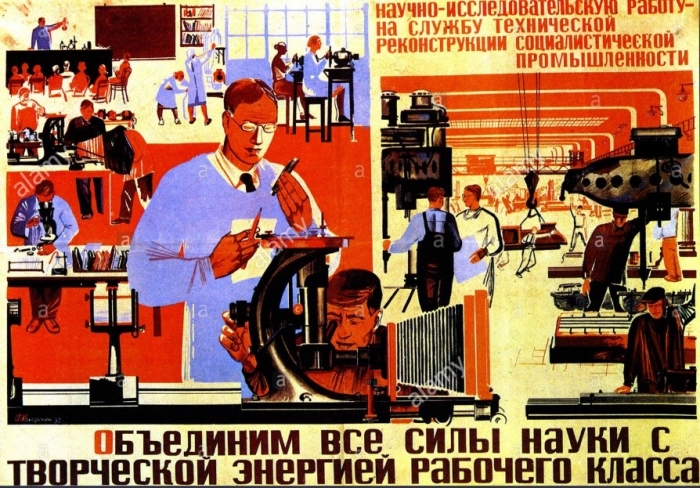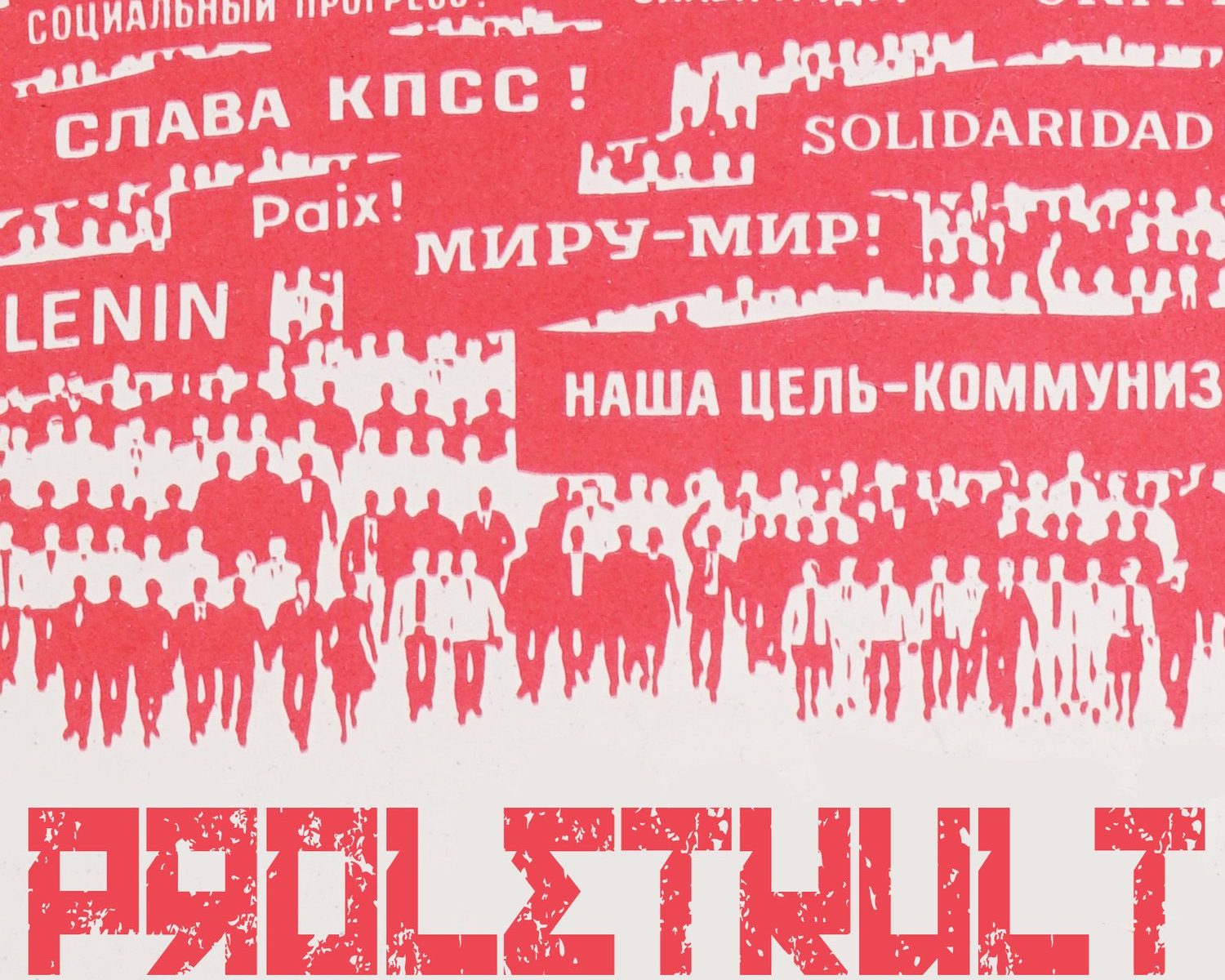In honor of Lenin on the anniversary of his death, we publish this short essay by Lunacharsky on Lenin’s views regarding art. This text was originally published in “Khudozhnik i Zritel” (Artist and Audience), issues 2-3, March-April 1924, and has been translated by Reuben Woolley. Introduction by Cliff Connolly. The original source of the translation can be found here.
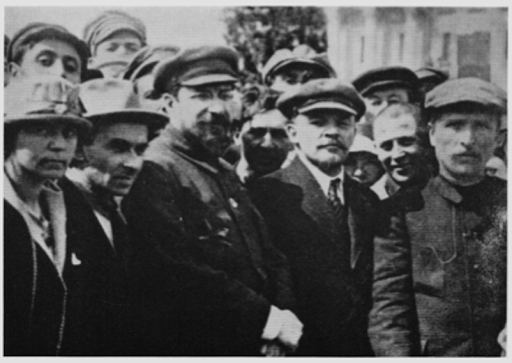
In the days following Lenin’s death in late January 1924, the Soviet Union was flooded with artistic and literary works commemorating the fallen revolutionary. In his poem The Komsomol Song, Mayakovsky wrote the now-famous words: “Lenin lived, Lenin lives, Lenin is to live forever.” The city of Petrograd was renamed in Lenin’s honor, and the new Leningrad Gublit published a propaganda broadsheet with the poem A Drop of Ilych’s Blood. As the verses suggested, the departed leader continued to give inspiration to millions even in death; a drop of his blood in every communist’s veins. This was the environment that gave birth to the following work from Lunacharsky.
People were hungry for reminiscence to soothe their loss, and Lunacharsky delivered. A longtime Bolshevik and accomplished writer, he was made head of the People’s Commissariat for Education after the October 1917 revolution. In this position, he helped establish the Bolshoi Drama Theatre, protected historic cultural sites, oversaw public art exhibitions and experiments, and facilitated a drastic increase in Russia’s literacy rate. He had a unique perspective on Lenin, being sometimes in agreement with and other times in opposition to the latter’s policy ideas (although the disagreements were always comradely in nature). He also frequently served as an intermediary between Lenin and the art world, often taking measures to safeguard artistic institutions that Lenin was harshly critical of.
One such institution was that of Proletkult, a federated collective of avant-garde artists working mainly in drama, literature, and the visual arts. Over half a million members participated in its studios, clubs, and factory circles. The controversial organization sought to prefigure a purely proletarian culture untainted by capitalism, and produce works that would reflect this aesthetic. While Lunacharsky was a huge proponent and succeeded in acquiring state funding for Proletkult projects, others took issue with its founding ethos. Lenin in particular was concerned that it amounted to no more than a group of “bourgeois intellectuals” trying to create a culture from thin air and impose it on the working class.
Throughout this memoir of his time with Lenin, Lunacharsky paints a picture of a man with a passionate yet strangely distant relationship to art. Lenin loves music, but “it upsets him.” Lenin loves art history, but cannot devote enough time to it to form an opinion. Lenin has trouble funding an opulent theatre when there are run-down schools but refuses to close it. On matters of sculpture, Lenin defers to the judgment of others and then is elated to hear their learned conclusions match his insufficiently educated opinion. Overall, this is totally in line with the character of a disciplined revolutionary who avoids speaking on topics he hasn’t thoroughly investigated. The resulting quirks are entertaining and were precisely what a nation in mourning needed in the wake of a popular leader’s death.
It’s worth noting that the author did not originally intend this piece for publication, and didn’t bother editing closely after writing the piece essentially in note-form. The tone and pacing is somewhat strange in the original Russian, and this is exacerbated by its translation into another language. While not a perfect piece of prose, it still holds a great deal of merit and is well worth a read. Thanks to Lunachasky’s written memories, we know Lenin truly lived. In reading these words almost a hundred years after they were written, we see that Lenin lives. In our daily work as communist militants and organizers, we ensure that Lenin is to live forever.
Lenin and Art by Anatoly Lunacharksy (1924)
Lenin had very little time during his life to devote any concerted attention to art, and so he had always considered himself profane on the subject; he disliked making statements about art, as he always found dilettantism alien and hateful. His tastes, nevertheless, were strongly defined. He loved the Russian classics, realism in literature, portraiture, and so on.
Back in 1905, during the first revolution, he once had to spend the night at the flat of comrade D. I. Leshchenko, where, as it happened, there was a complete collection of Knackfuss’ publications, dedicated to the world’s greatest artists. The next morning, Vladimir Ilyich said to me: “What an engaging topic the history of art is. There is so much work here for a communist to do. I couldn’t get to sleep until morning, and spent the whole time looking through book after book. It tormented me to realize that I have not had the time to work at all with art, and will never have such time in the future.” I remember these words of Ilyich’s extremely distinctly.
I had to meet with him several times after the revolution to take part in various juries on artistic matters. In one such case, for example, I remember him calling for me, then he, Kamenev and I went to an exhibition of designs for statues to replace the figure of Alexander III, which had been torn from its luxurious plinth besides the temple of Christ the Savior. Vladimir Ilyich surveyed all of the statues with a strongly critical eye. He didn’t like a single one. He stood particularly intrigued in front of a design of the futurist school, but when asked for his opinion, said: “I can’t understand anything here, ask Lunacharsky.” Upon hearing me state that I could not see a single worthy piece, he looked elated, and said: “my, I thought that you were going to put any old futuristic scarecrow up there.”
Another time, the question at hand was a memorial for Karl Marx. The renowned sculptor M.1 showed particular obstinacy in the matter. He presented a design for a grand statue: “Karl Marx, standing atop four elephants.” Such an unexpected subject struck us all as bizarre, Vladimir Ilyich very much included. The artist began reworking his memorial, eventually doing so three times, not wishing to relinquish his victory in the competition on any grounds whatsoever. When the jury, under my chairmanship, finally rejected his design and settled on a collective piece by a group under the leadership of Aleshin, sculptor M. burst into the office of Vladimir Ilyich and complained to him directly. Vladimir Ilyich took his complaint to heart, and called me directly to summon a new jury. He said that he would come personally to view the Aleshin design alongside the design of sculptor M. And so he came. The Aleshin design was found to be perfectly satisfactory, sculptor M.’s design was rejected.
At the 1st of May celebration of the same year, in the same place that the construction of the Marx memorial had been proposed, the Aleshin group built a small-scale model of their piece. Vladimir Ilyich travelled there especially. He walked around the memorial several times, asked how large it was going to be, and eventually gave his approval, but not before saying: “Anatoly Vasilievich [Lunacharsky – trans.], instruct the artist specifically that the head must come out similar enough, that one gets the same impression of Karl Marx that one would get from his best portraits; the likeness here is somewhat diminished.”
Back in 1918 Vladimir Ilyich called me and said that we must propel art forwards as an agitational material, and with this in mind he laid out two projects. Firstly, in his opinion, we had to decorate buildings, fences, and other such places where there are usually posters with grand revolutionary slogans. He immediately suggested some such slogans himself.
This project was taken up wholeheartedly by comrade Brikhnichev, when he was in charge of the Gomel Department for People’s Education. I later saw that Gomel was absolutely covered in such slogans, all containing worthy ideas. Every single mirror in one grand old restaurant in particular, which had by then been transformed into an educational institute, was now covered in aphorisms penned by comrade Brikhnichev.
In Moscow and Petrograd, not only did this not catch on in such a grandiose manner, but not even according to Ilyich’s initial vision.
The second project concerned the placement of temporary alabaster statues of great revolutionaries on an unusually large scale, across both Petersburg and Moscow. Both cities responded eagerly to my suggestion that they put Ilyich’s idea into practice, suggesting even that each statue should have a ceremonial opening with a speech about the revolutionary in question, and that underneath each statue they would place explanatory plaques. Vladimir Ilyich termed this “monumental propaganda.”
In Petrograd this “monumental propaganda” was relatively successful. The first such statue was of Radishchev, designed by Leonid Shervud. A copy of it was erected in Moscow. Unfortunately, the Petrograd statue broke and was not replaced. Generally speaking, the majority of the wonderful Petersburg statues didn’t hold out, on account of their brittle material, but I remember some fine figures: busts of Garibaldi, Shevchenko, Dobroliubov, Herzen, and several others. Left-deviationist statues came out worse. For example, upon the unveiling of a cubist rendition of the head of Perovskaya, some just recoiled in shock, and Z. Lilina demanded in no uncertain terms that the statue be taken down immediately. I remember just as clearly that many found the statue of Chernyshevsky exceedingly ornate. Best of all was the statue of Lassale. This work, erected outside the former city Duma, remains there to this day. It’s like it was cut from bronze. The full-size statue of Marx, made by the sculptor Matveev, was also extremely successful. Sadly, it broke and has been replaced in the same spot – that is, next to the Smolny Institute – by a bronze bust of Marx in a more or less regular style, without Matveev’s original sculptural rendering.
In Moscow, where the statues could be seen at once by Vladimir Ilyich, they were not such a success. Marx and Engels were depicted in some sort of basin and earned themselves the nickname “the bearded swimmers”. The Sculptor K.2, however, managed to outdo everyone. For a long time, people and horses, walking and driving down Myasnitskaya, would glance fearfully at some enraged figure, who had been boarded up out of precaution. This was the respected artist’s depiction of Bakunin. If I’m not mistaken, the statue was immediately destroyed by anarchists upon its unveiling; despite all their progressiveness, they didn’t wish to suffer such harsh sculptural “mockery” of their great leader’s memory.
Generally speaking, there were very few successful statues in Moscow. Arguably better than most was the statue of the poet Nikitin. I don’t know if Vladimir Ilyich looked at them in any detail, but either way he told me, with some dissatisfaction, that nothing had come of monumental propaganda. I responded with reference to the experience in Petrograd and the report of Zinoviev. Vladimir Ilyich shook his head doubtfully and said “what, you’re telling me that every single talent gathered themselves in Petrograd, and Moscow is entirely worthless?” Indeed, I couldn’t explain to him such a strange occurrence.
He was distinctly doubtful of the memorial plaque for Konenkov. He didn’t consider it very convincing. Konenkov himself, incidentally, called this work his “imaginary-realist plaque”, not without a touch of sardonicism. I also remember the artist Altman gifting Vladimir Ilyich a bas-relief depicting Khalturin. Vladimir Ilyich liked the bas-relief very much, but he asked me, did this work not strike me as futuristic? His opinions regarding futurism were entirely negative. I wasn’t present for his conversation in Vkhutemas, whose accommodation he once visited, if I’m not mistaken because some young relative of his was living there.3 I was later told of the long conversation between him and, of course, the left-wing ‘Vkhutemastsy’. Vladimir Ilyich wrote them off, laughing a little condescendingly, but then stated that he wouldn’t personally take up the task of talking seriously on such matters, as he felt himself to be insufficiently competent. The youths themselves he found to be very nice, and their communist disposition pleased him.
Vladimir Ilyich rarely managed to enjoy art during the final period of his life. He went to the theatre a few times, seemingly exclusively the Khudozhestvenny, which he valued very highly. Plays in that theatre would invariably leave a wonderful impression on him.
Vladimir Ilyich had a strong love for music, but it would upset him. At one point I had impressive concerts arranged in my apartment. Shalyapin sang, Meichik, Romanovsky, the Stradivarius quartet, Kusevitsky on the contrabass and several others all played. I invited Vladimir Ilyich repeatedly, but he was always busy. One time he said to me directly: “of course it’s wonderful to listen to music, but you know, it upsets me. I somehow find it hard to bear.” I remember that comrade Tsiurupa, who managed to get Vladimir Ilyich to come twice to his home concerts with that same pianist Romanovsky, also told me that Vladimir Ilyich had enjoyed the music very much, but was visibly agitated.
I will add that Vladimir Ilyich was very irritated by the Bolshoi Theatre. I had to indicate to him several times that the Bolshoi cost us comparatively little, but nevertheless, at his insistence, its grant was reduced. Vladimir Ilyich was led in this by two considerations. One of them he admitted upfront: “I find it uncomfortable,” he said, “that we sustain such a luxurious theatre for great amounts of money, when we lack the resources to sustain even the simplest of village schools”. The other consideration was elaborated when I disputed his attack on the Bolshoi Theatre during a meeting. I pointed out the theatre’s undeniable cultural significance. Upon hearing this, Vladimir Ilyich wryly squinted at me, and said: “But regardless, it is a remnant of landlord culture, no one could possibly argue otherwise.”4
This is not to say that Vladimir Ilyich was entirely inimical to the culture of the past. He found the entire pompous-gentry tone of opera to be specifically landlord-like. On the whole he valued the visual art of the past, especially Russian realism (including, for example, the Peredvizhniki), very highly indeed.
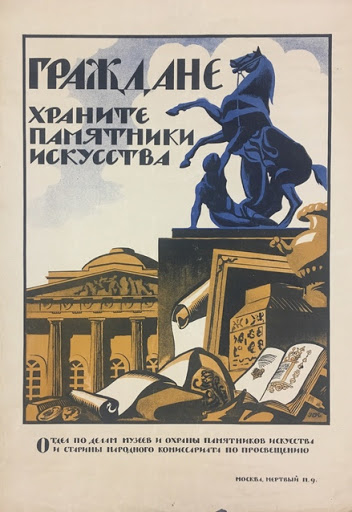
Thus ends the factual information that I am able to offer the reader from my memories of Ilyich. But I will remind you that Vladimir Ilyich at no point used his aesthetic sympathies or antipathies to form any of his most fundamental ideas.
Comrades with an interest in art will remember the address to the Central Committee on questions of art which was quite sharply directed against futurism. I am no more familiar with this topic than others are, but I think it was one in which Vladimir Ilyich saw himself as having a genuine and serious contribution to make.5
At the same time, and entirely mistakenly, Vladimir Ilyich considered me not quite a supporter of futurism, but not quite entirely pandering to his own view either, and probably as a result he did not consult me before the publication of the Central Committee rescript, through which he intended to correct my stance.
Vladimir Ilyich also diverged from me quite sharply in relation to Proletkult. On one occasion, he even strongly scolded me. I’ll state first of all that Vladimir Ilyich absolutely did not deny the significance of workers’ circles for the production of writers and artists from a proletarian background, and promoted their national unification as a desirable aim, but he was very afraid of the feeble attempts of Proletkult to produce alongside this a proletarian science, as well as proletarian culture on a much larger scale. This, firstly, seemed to him a completely untimely task for which they lacked the capabilities; secondly, he thought that such ideas, which were of course still underdeveloped, distanced the proletariat from study, and from embracing the fundamentals of already-developed science and culture; thirdly, Vladimir Ilyich was evidently nervous to make sure that there was not, stirring in Proletkult, the beginnings of some kind of political heresy. He was considerably displeased, for example, with the large role played in Proletkult at the time by A. A. Bogdanov.
During the time of the Proletkult congress, which I believe was in 1920, he instructed me to travel there and state, in no uncertain terms, that Proletkult should be placed under the leadership of Narkompros, consider itself a Narkompros organisation, and so on. In short, Vladimir Ilyich wanted us to pull Proletkult in line with the state, at the same time as he took measures to pull it in line with the party. The speech that I gave at the congress I then made sure to edit in an evasive and appeasing manner. It didn’t seem right for me to come in with some sort of attack, upsetting the workers who had decided to gather together. This speech was shown to Vladimir Ilyich in an even softer revision. He called me to his office, and gave me a good dressing down. Later, Proletkult was restructured in accordance with Vladimir Ilyich’s orders. I repeat, he never so much as thought of its abolishment. On the contrary, he had great sympathy for its purely artistic aims.
The new artistic and literary formations that came into being during the revolution, for the most part, evaded Vladimir Ilyich’s attention. He simply had no time to devote to them. All the same, I can say that he definitely did not appreciate Mayakovsky’s 150,000,000. He found the book to be overly flowery and pretentious. One can’t help but regret that he was no longer able to pass judgement on the other, more insightful transformations in revolutionary literature that came later.
Everyone is well aware of the enormous interest Vladimir Ilyich had in cinematography.
